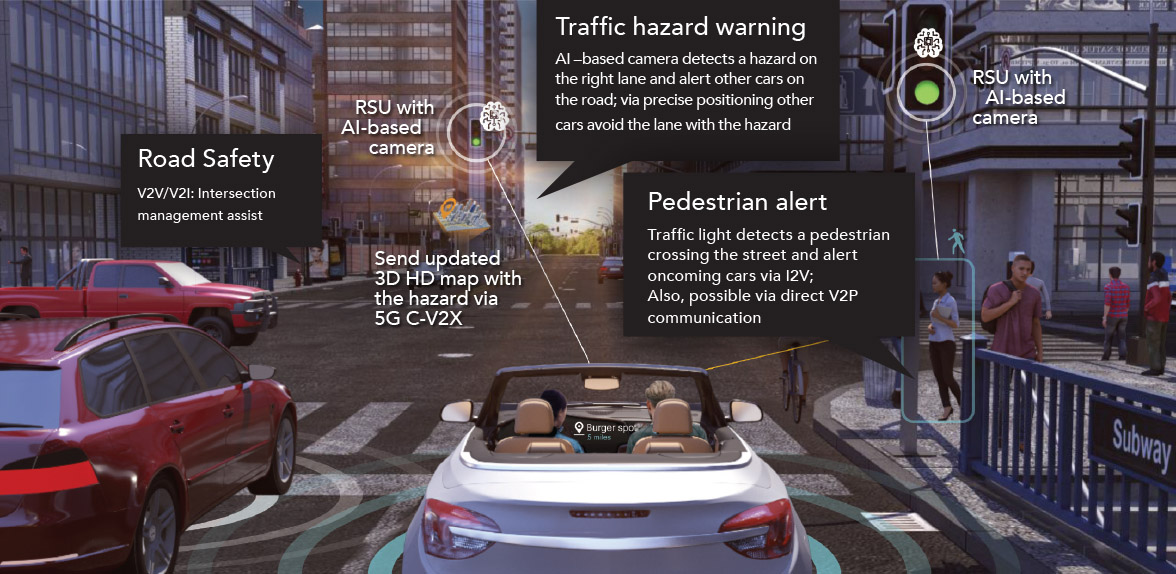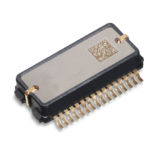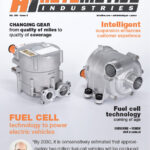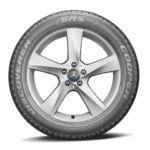There is global support for development and rollout of C-V2X technology which, according to the 5G Automotive Association (5GAA) “is set to revolutionise the mobility ecosystem and the way drivers interact with the world. It is essential to redefining transportation by providing real-time, highly reliable, and actionable information flows to enable safety, mobility and environmental applications”.
Created on September 2016, the 5GAA unites a large member base, including eight founding members: AUDI AG, BMW Group, Daimler AG, Ericsson, Huawei, Intel, Nokia, and Qualcomm Incorporated.
In this article Dino Flore, VP Technology, Qualcomm Europe, sets to address what he sees as “C-V2X myths”.
Qualcomm Technologies has a rich history of being at the cutting edge of innovation. Cellular vehicle-to-everything (C-V2X) is a prime example. Telematics is one of the foundations of our automotive business, along with infotainment, in-vehicle compute and increasingly, with advanced driver assistance systems (ADAS) and automation. With C-V2X, we listened carefully to and were inspired by our many customers and their vehicular safety communication needs, and we invented.
Along with others in industry, we contributed our inventions to standards. Then our engineers went into overdrive, and we developed a succession of C-V2X products with a telematics heritage and a safety mission
We started with the stand-alone Qualcomm® 9150 C-V2X Platform, then announced the integrated Qualcomm® Snapdragon™ Automotive 4G Platform, which features integrated C-V2X direct communications and LTE wide area network solution and the Qualcomm® Snapdragon™ Automotive 5G Platform, ushering in C-V2X and 5G network connectivity for automotive.
The Snapdragon Automotive 4G and 5G Platforms are designed to provide unmatched support for rich in-vehicle experiences, including dual SIM dual active (DSDA) — included on the Snapdragon Automotive 5G Platform — precise positioning for lane level navigation accuracy, multi-gigabit cloud connectivity, vehicle-to-vehicle (V2V) and vehicle-to-roadside infrastructure (V2I) communications for safety, high bandwidth low latency teleoperations support, each of which are key requirements for automotive safety, platooning, autonomous, and always connected driving experiences.
Our automotive customers work closely with us, and in lock step we have shown the remarkable effectiveness of C-V2X and have worked hard on facilitating regulatory approval in many parts of the world, where C-V2X is the technology of choice.
The purpose of this contribution, as the title suggests, is to de-bunk some of the C-V2X myths – using the science, technology and industry findings to clearly separate fact from fiction.
Myth #1:C-V2X needs cellular networks
Fact: C-V2X does not need cellular networks to provide V2X safety services. C-V2X uses the 5.9 GHz ITS spectrum, which means that C-V2X transmission does not require a paid subscription.
To explain:C-V2X, sometimes called LTE-V2X in other parts of the globe, is a 3rd Generation Partnership Project (3GPP)-specified radio access technology based on LTE. It operates in broadcast mode without network assistance, and communicates between vehicles and to and from local roadside infrastructure.
The direct communications interface is sometimes called PC5. The notion that cellular is used confuses some into thinking it equals a relationship with the mobile network operators, but the primary relationship to cellular networks is that PC5 uses the same technology waveform and time division concepts of LTE networks. That is, operation in the PC5 mode does not make use of a SIM card.
C-V2X benefits are multiplied when delivered by a platform such as the Snapdragon Automotive 4G or 5G Platforms, as these combine short range V2X functionality and long-range network capabilities into a single chipset solution.
The long-range or wide area access via the core network is often called vehicle-to-network (V2N). This wide area network mode of C-V2X, sometimes called the Uu interface, does require network infrastructure and a SIM card, but it is independent for security reasons from the short-range communications. When combined in the same radio as these platforms, C-V2X will offer secure vehicular safety, 4G LTE and 5G, and wide area connectivity in the near future.
Myth #2:C-V2X wastes the years of investment in V2X research and standardization, and its companion.
Myth #3: C-V2X’s performance is overstated.
Facts: Simply stated, C-V2X is a different, newer – and better – radio that can use the very same applications for which the many years of V2X research and standardization has produced.
These applications work to some degree when delivered over other radios, but even better with C-V2X.
As proof, a group of automakers and Qualcomm Technologies working under a consortium called the Crash Avoidance Metrics Partners (CAMP) LLC, conducted “an objective evaluation of the
C-V2X communication technology by developing V2X functional and performance test procedures, conduct testing, conduct performance assessment, and document the results.”.
CAMP tested C-V2X in the lab, on roads and then under highly congested conditions. It concludes that C-V2X has “good LOS [line of sight] performance”, “good NLOS [non-line of sight] performance”, “good communication performance in mixed real world traffic” and when there was congestion, C-V2X was shown to “perform reliably” and predictably.
In fact, CAMP has shown that C-V2X protocols allow other technologies to adjust their rate of transmission when multiple vehicles, in close proximity, are broadcasting V2X messages. This is an example of a legacy protocol working for new technology.
Indeed, much of what the ITS community has collectively developed is delivered by C-V2X.
The 5G Automotive Association (5GAA), a global industry association consisting of over 130 companies, benchmarked C-V2X versus IEEE 802.11p-based technologies and has documented that C-V2X shows superior performance in a number or areas, including packet delivery reliability over range for both LOS and NLOS conditions, greater resilience to interference, and consistent with CAMP field results, exhibits similar performance under congested laboratory conditions.
Now, why does C-V2X perform better? Consider the physics. C-V2X has:
Greater energy per bit In PC5, a transmission can be narrowband over a longer time without loss in system capacity by sharing the channel with other transmissions, e.g. FDMA. The minimum allowed bandwidth of a transmission in PC5 is configurable and can be as low as four resource blocks, e.g., 720 kHz. This allows for much higher energy per information bit in PC5.
Turbo coding PC5 communication uses turbo codes as compared with convolutional coding used for 802.11p-based communication. To compare, the turbo code used in PC5 provides larger coding gain and is more robust in varying radio conditions. The exact gain of the turbo code versus the convolutional code depends on coding rate and channel conditions.
Hybrid automatic repeat request (HARQ)
PC5 communication uses the blind hybrid automatic repeat request (HARQ) technique. HARQ communications use a combination of forward error correcting codes along with automatic repeat request (ARQ) error-control and soft-combining.

PC5 communication is a broadcast communication. Hence, there is no feedback from the receiver to the transmitter indicating if the packet has been successfully received. With the
PC5 communication technique, the same data packet is sent twice within the determined packet delay budget (PDB) time frame. The same data packets are sent with different coding.
At the receiver, the two transmissions are then jointly used to determine the sent data. This communication technique is referred to as blind HARQ.
It is worth noting that HARQ not only provides an increase in link budget, but also provides a diversifying mechanism against strong interference. For example, if one of the two transmissions is lost due to a strong interference – for example, due to the hidden node effect, the packet can still be successfully received through soft-combining with the remaining transmission.
The performance, thanks to the coding gain in this case, is much better than purely repeating the packet twice.
802.11p-based communication does not use any form of HARQ communication. Use of this technique results in about 3dB of link budget gain for PC5 communication. It is interesting that opponents to C-V2X challenge the validity of HARQ, when in reality it’s simply part of what makes C-V2X a better, more modern radio.
Channel estimation In PC5, reference signals are inserted evenly in the transmission duration. In dedicated short-range communication (DSRC), an 802.11p-based wireless communication technology, this happens mainly at the beginning of the transmission. This leads to some performance gain in PC5 due to better channel estimation, particularly when vehicle speeds are high. The exact performance gain depends on the channel condition.
Field test results demonstrate higher reliability over all ranges for C-V2X when compared to 802.11p-based technology under various LOS, NLOS, and interference scenarios.
Myth #4:Once 5G happens, we need to start all over
Fact:5G V2X (3GPP R16 and beyond) devices offer additional ITS functionality to that of LTE-V2X (3GPP Rel-14/15), so just like the cell phone you may have at your side or in your purse or pocket as you read this, older generations and newer generations are integrated into the same device. To be clear, 5G NR C-V2X sidelink does not replace the need for LTE-V2X (3GPP Rel-14/15) and implementations support both LTE V2X and 5G V2X in the same solution, both operating in different portions of the 5.9 GHz ITS band.
5G V2X devices will coexist with LTE-V2X in 5.9 GHz band but are envisioned to use different channels. This is one reason why 5GAA has proposed 40 MHz for “Advanced C-V2X” in addition to 20 MHz for “Basic C-V2X”. This ensures that deployments of vehicles and infrastructure continue to work seamlessly even as technology continues its evolution to deliver new functionality.
Myth #5:C-V2X is smoke and mirrors. Devices are difficult to obtain.
Fact: There is a robust and competitive ecosystem of chipset manufacturers, modules and vehicle and roadside device suppliers. The ecosystem isn’t drawn from scratch; but has existed for years to deliver automotive telematics solutions, and as C-V2X functionality has been added to the automotive wireless platform, so comes a mature ecosystem.
Collectively, they offer a host of products applicable to global region, e.g., in Europe one may purchase Radio Equipment Directive (RED) certified devices, and in the US, one may purchase devices that meet FCC Class C requirements – all with the high performance described in this article.
C-V2X is designed to serve as the foundation for vehicles to communicate with each other and virtually everything around them—providing 360º coverage and a higher level of predictability for enhanced road safety and autonomous driving.
When compared with 802.11p-based technologies, Direct C-V2X provides increased communication range (~2X), better NLOS performance, enhanced reliability, and cost efficiency without relying on cellular network assistance or coverage for enhanced safety services.



 Murata’s SCHA600 6 DoF MEMS sensor for safety-critical automotive applications and automated driving
Murata’s SCHA600 6 DoF MEMS sensor for safety-critical automotive applications and automated driving Fuel cell technology coming of age
Fuel cell technology coming of age Intelligent suspension enhances customer experience
Intelligent suspension enhances customer experience Cooper Discoverer SRXLE™ Tire Selected as Original Equipment for New Mercedes-Benz GLS SUV
Cooper Discoverer SRXLE™ Tire Selected as Original Equipment for New Mercedes-Benz GLS SUV With greater control over emissions, iVT can cut costs for the OEM, reducing the amount it has to spend on complex after-treatment systems
With greater control over emissions, iVT can cut costs for the OEM, reducing the amount it has to spend on complex after-treatment systems IndiGO Auto Group Announces Kelly Wolf as New CEO
IndiGO Auto Group Announces Kelly Wolf as New CEO


